In the “Foundational Football” Gridiron Notes published in June 2022 prior to the launch of Madden NFL 23, EA Sports explained an important game design decision for this year’s football video game (emphasis mine):
We will be featuring ‘spot-drop’ zones as our core zone coverage concept within our defensive playbooks and AI. This means that by default, all the zone coverages in our playbooks will be strictly using spot-drop zone logic and covering a specific area of the field, instead of a mixture of both spot-drops and match coverages like we had last year. The main purpose of this change was to make the play-art in the play-call screen the central source of truth for players so they can better predict how their zones will react during the play.
The reasoning provided by EA Sports for this decision is easily justified: novice and intermediate Madden players benefit from understanding clearly the coverages they are calling on defense, and matching functionality to presentation prevents any confusion that may have arisen from the bolted-on nature of man-match coverage as it has existed in the series since Madden NFL 17.
With that conceded, if EA wants to deliver gameplay that is authentic to the game’s source material, spot-drop zone defense must fade into memory. Instead of watching deep defenders drift into grass out of the play, EA Sports must teach both their CPU pass defenders and their game’s players to instead actively read and react to receivers and to attack their routes using man-match coverage. After all, modern NFL defenses are doing just that today.
Man-Match Is Old News
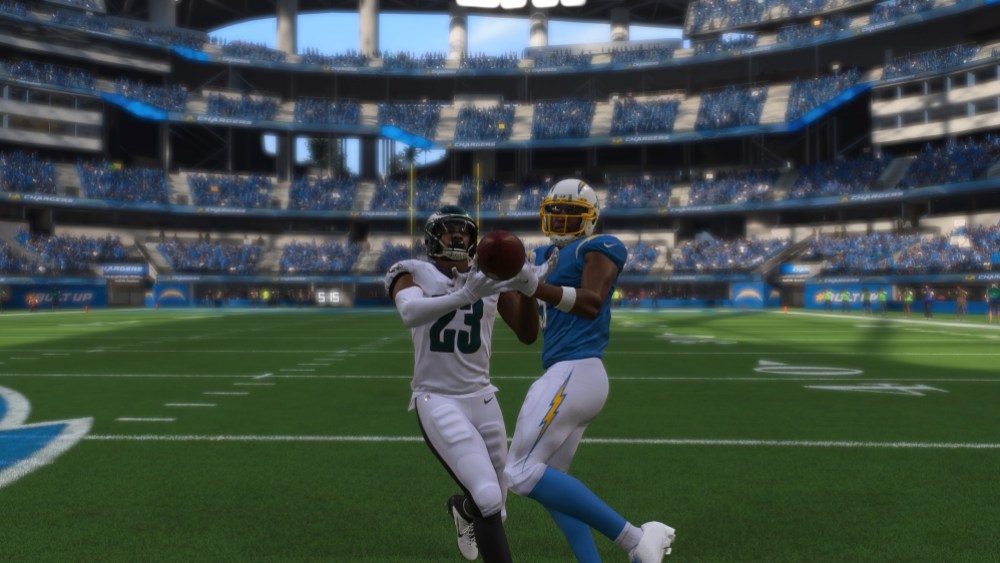
If you’ve played recent Madden games, you may already have some familiarity with man-match coverage. Unlike man-to-man defense, which locks a defender’s assignment before a play or spot-drop zone defense that asks a defender to cover an area of the field, man-match coverage allows defenders to choose their coverage assignments post-snap based on the routes run by the receivers. Defenders in man-match coverage schemes can dynamically convert to man-to-man coverage on demand, pass off routes to teammates in better position to defend them, zone off to replace assignments abandoned by teammates in conjunction with their decisions, or even make downhill cuts in anticipation of routes entering their vicinity from across the field.
Probably the most accessible example of man-match coverage is Cover 3 Match. Also known as “Rip / Liz”, the coverage was created in the early 1990s by the the head coach and defensive coordinator for the Cleveland Browns, Bill Belichick and Nick Saban (you may have heard of them). At a high level, Cover 3 Match asks defenders to match out-breaking routes to the boundary, carry vertical routes up the field, and deliver crossers to better-positioned interior defenders, all while maintaining the overall structure of a traditional Cover 3 zone coverage. It plays out as a sort of blend between Cover 3 spot-drop zone and Cover 1 man-to-man coverage. The coverage was introduced in EA Sports football games beginning in Madden NFL 17, and in Madden NFL 23 it is found in defensive playbooks as Cover 3 Seam.
A commonly cited benefit of Cover 3 Match over spot-drop Cover 3 is the coverage’s ability to defend Four Verticals without immediately conceding routes run up the seam between the boundary cornerbacks and single-high safety. The underneath zone defenders will carry vertical routes up the field once they see them rather than naively dropping to curl-flat zone landmarks and ignoring offensive skill players. Here is a look at it below.
This more active behavior prevents easy chunk completions to the slot receiver and tight end. The important detail to remember is that the coverage responds first to what routes the offense’s eligible receivers run before defenders declare their coverage responsibilities.
Man-Match Is NFL Defense
With 2 out, Jimmie Ward (#1) can now work with vision on Q and ends up causing an INT. Cowboys got a completion off Hoss Z Juke (below) where Ward had to reroute 2 and couldn't work into the window pic.twitter.com/48m2s712fT
— Shawn (@SyedSchemes) January 23, 2023
The dynamism and choreographed aggression of man-match coverage was prominently showcased this past Sunday during the NFC Divisional playoff game between the Dallas Cowboys and the San Francisco 49ers. With 2:18 in the 2nd quarter, Dallas motioned into a shotgun formation with three receivers on the left-hand side of the ball (three receivers out of the backfield on one side of an offensive formation is commonly called “trips”), two receivers to the right, and only quarterback Dak Prescott in the backfield. From this formation, the Cowboys called a pass play with switch concepts on both sides and the innermost receiver on the trips side (CeeDee Lamb in this case) tagged to run an option route that ultimately breaks outward towards the sideline.
We all remember the result of this play: 49ers slot defensive back Jimmie Ward aggressively jumped the underneath route by Lamb to tip the ball to his teammate, All-Pro linebacker Fred Warner, for an interception. This critical play likely took crucial points off the board for the Cowboys and gave the 49ers the opportunity to tack on a field goal of their own before heading into the locker room. How did Ward and the 49ers make this happen?
Before I go any further, I must give a huge shout-out to football writer Cameron Soran for his excellent book “The Pass Coverage Glossary”, which is an excellent and thorough overview of modern football pass coverages. With Soran’s detailed book in hand, as far as my admittedly-untrained eye can tell the man-match coverage the 49ers employ on the trips side of this play is a 4-over-3 box coverage named Stump. The important things you need to know about Stump for the purposes of this example are:
- The trips side boundary cornerback, on this play #38 Deommodore Lenoir, defends in man-to-man coverage the #1 receiver if he runs a vertical route past seven or eight yards, depending on the team and game plan. In man-match coverages, the defense identifies receivers on a side of the formation by counting them from the sideline towards the ball, so here the #1 receiver and Lenoir’s assignment to read is T.Y. Hilton.
- The trips side safety, here #31 Tashaun Gipson, will generally play man-to-man over top of any vertical route by the #2 receiver when the #3 receiver does not run a vertical route (again, count receivers inward from the boundary to identify them — on the trips side of this play, #2 is Dalton Schultz and #3 is CeeDee Lamb).
- The foremost responsibility of trips side apex defender, #1 Jimmie Ward, is to jump any fast out-breaking route by the #3 receiver if he sees it. This rule takes precedence over any other responsibility he has in the coverage.
At the snap, the 49ers’ defenders first wait for the Cowboys receivers to declare their routes. The #1 and #2 receivers actually swap shortly after the snap as Hilton and Schultz run a switch release off the line, and accordingly the 49ers defensive backs know they are to swap their assignments using a coverage technique called Banjo. Moments after the snap, Lenoir is now covering Schultz’ wheel route while Gipson is eyeing Hilton. Linebacker Fred Warner walls off CeeDee Lamb to deny him easy access to the middle of the field, forcing his break to the outside.
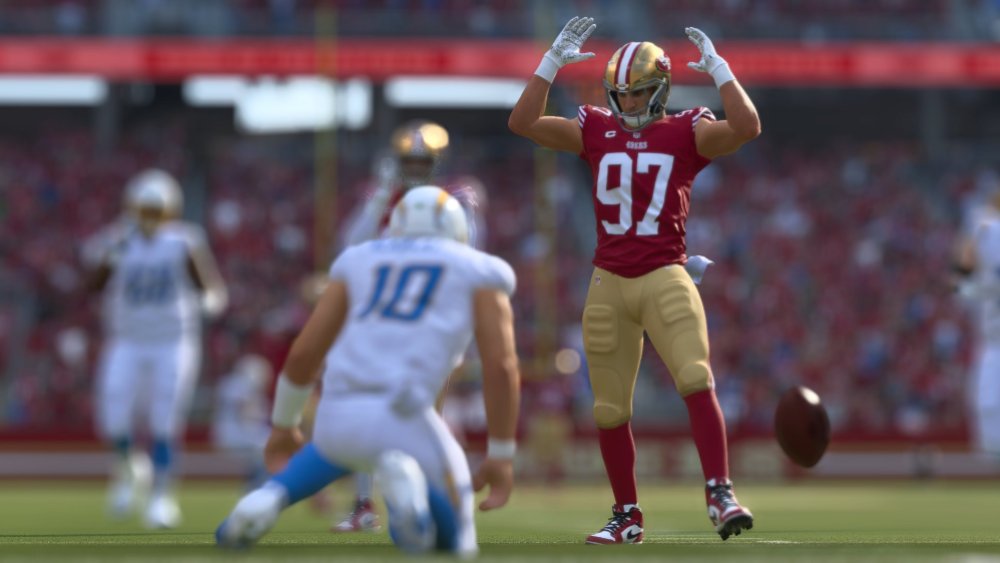
Just before the snap, we also clearly saw Jimmie Ward bark a signal to his teammates, presumably making a coverage call based on a key he identified in the offense. I am admittedly assuming here that Ward’s pregame film study prepared him for this particular combination of routes by the Cowboys’ offense from this formation, allowing him to get his teammates into Stump. Post-snap, Ward keeps his eyes on quarterback Dak Prescott through the duration of the quarterback’s pass drop. Ward then gets eyes on Lamb early, anticipating his cut towards the sideline forced by Warner. He even turns his entire body to face Lamb as the receiver makes his cut.
Ward breaks on the ball the moment it is thrown, and he actually arrives to the catch point before Lamb does thanks to his excellent instincts and preparation, ultimately deflecting the ball to Warner for the interception. Ward knew he was to cover this route because his assignment in the Stump man-match coverage call was foremost to cover #3 out-now. In short, his pregame study prepared him for that threat and this allowed him to jump the route before Lamb was finished running it.
This is but one prominent example of man-match defense in action out of countless pass defenses called this past NFL season I could have pulled from. Man-match is already thoroughly explored territory in the football world. Soran’s “Pass Coverage Glossary” is over 300 pages cover-to-cover and catalogs over 70 of the most commonly used man-match coverage calls in the highest levels of football. He further notes in the book’s foreward that he does not believe his guide is close to exhaustive. Most FBS college football defenses and even top high school football defenses now frequently call and execute man-match coverages.
In addition, Nick Saban continues to iterate on his Rip/Liz schemes at Alabama, the man-match coverages devised by Oklahoma head coach Brent Venables helped win multiple national championships at Clemson where he served as defensive coordinator, and Kirby Smart’s man-match defense is currently dominating college football without apology at Georgia.
How Much Man-Match Is Present In Madden 23?
After I grieved my Cowboys losing another divisional round playoff game, I asked myself a question: is it possible to replicate how Jimmie Ward masterfully jumped CeeDee Lamb’s underneath route with the limited match coverage options currently available in Madden NFL 23? If this coverage is not possible to replicate in Madden, what coverage options does the game provide against this play instead? Do the pass coverage options on offer in Madden even impede the Cowboys’ play call at all?
I booted up Madden 23 into practice mode to find answers to these questions. All videos following were shot in Madden NFL 23 on PlayStation 5 with a lightly-modified divisional roster update. I played on All-Madden difficulty using Simulation game style and default gameplay sliders across the board.
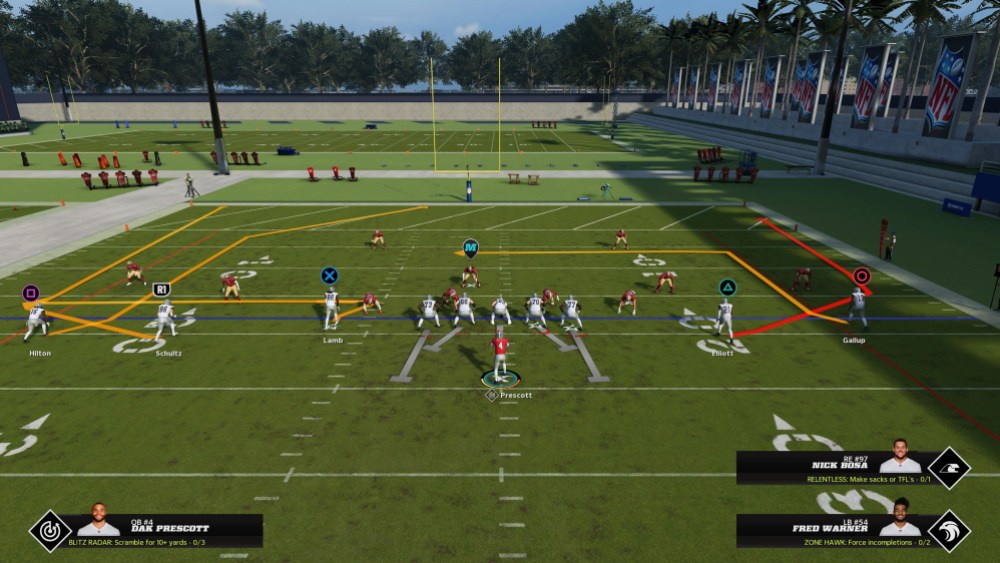
Gun Empty Cowboy – Inside Wheels
We can mostly replicate the Cowboys’ play call with Gun Empty Cowboy – Inside Wheels, adding a zig-out hot route to the tight end before the ball is snapped. The play is flipped to match the Cowboys deploying their trips receivers to the left. To match how the Cowboys deployed their receivers, we must also edit the position CeeDee Lamb from wide receiver to tight end before entering practice, as legacy player deployment rules in Madden mostly prevent replacing a tight end with a wide receiver in any formation. The actual tight end, Dalton Schultz, and running back Ezekiel Elliott are deployed as slot receivers using the situational SLWR depth chart position introduced in Madden NFL 19.
Spot-Drop Zone Defense Is A Solved Problem
Madden 23 offers very few spot-drop zone coverage calls that will allow a CPU-controlled slot cornerback to jump a fast-to-flat route by the #3 receiver such as the zig-out we have assigned to Lamb — much less adequately challenge the rest of this pass play. I mostly expected this to be the case.
When executing the most similar defensive play call as a spot-drop coverage (Cover 4 Quarters), the defensive backs prioritize reaching their spot-drop zone landmarks foremost, with little to no recognition of the routes run by the opposition as they drop. Here is a look at that below.
This does ultimately put Ward in the correct area to defend Lamb’s zig-out, but unlike our real life example he does not do so with any particular activity or sense of urgency. Madden offenses can readily take advantage of passive spot-drop zone coverage behavior by calling specific route combinations to manipulate the zones and throwing with velocity and timing, as we do here.
The get-to-landmark priority and passive behavior of Madden’s spot-drop zone defenders also cause issues elsewhere in the play (again, in areas where it was not an issue for the 49ers). The backside safety drifts into grass and is very late to attack Michael Gallup’s dig route, leaving the wide receiver free to cross the safety’s face unimpeded and run wide open. Here is a look at that below.
Real-life defenses often task the safety with attacking the crossing route by either picking up the receiver in man coverage or cutting underneath of the route while the original defender remains over the top of the receiver, as they certainly don’t want a defender backpedaling out of the play. This aggressive behavior isn’t meaningfully present in Madden‘s spot-drop zone logic — and, again, I expected this.
Away from Cover 4 Quarters, most spot-drop zones Madden offers have similarly failing results against this pass play. Cover 3 Hard Flat achieves the original goal of keeping the nickel back in the flat to jump Lamb’s out route, but without attacking the route with any urgency. Cover 3 Hard Flat is so incredibly vulnerable to Four Verticals that I cannot recommend that any Madden player ever call it in a live game situation. Other spot-drop zones are non-starters that either don’t replicate Ward’s aggressive behavior we are looking to recreate, break entirely against this pass play, or both. For example, CPU-controlled defensive backs playing Tampa 2 spot-drop are similarly baffled by the switch release of the Cowboys’ receivers, and the wheel route breaks open effortlessly.
Madden 23’s Man-Match Catalog Is Sparse And Fragile
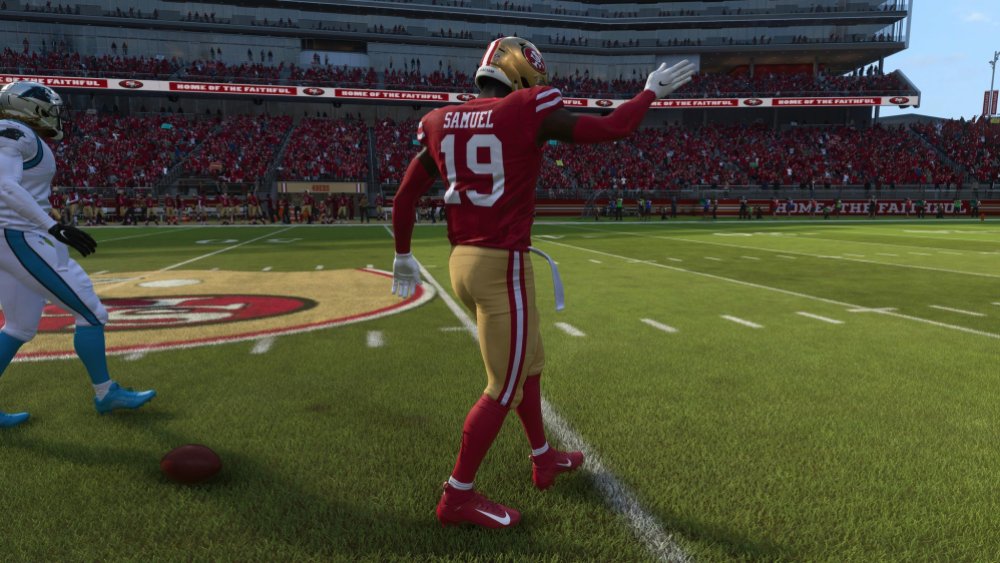
Similar to the streamlined playbooks featured in this year’s game that contain significantly fewer total plays than players are accustomed to, the scope of man-match coverage options was also reduced in Madden NFL 23. The only coverages in Madden 23 that respond to the Match coaching adjustment against trips formations are Cover 4 Quarters, Cover 4 Palms, Cover 6, and Cover 9. Of these four, we will focus on Cover 4 Quarters, which is the most common of the coverages in the stock defensive playbooks available in Madden 23.
When opposed by a trips formation, Madden‘s Cover 4 Quarters man-match coverage employs a full-field rule set players refer to as Solo. In real life, Solo is a half-field coverage call only for the defenders away from the trips side. It tasks the backside cornerback with man-to-man coverage against the #1 receiver on his side regardless of his route, and the backside safety helps on any downfield crossing route by the #3 receiver from the trips side (in man-match coverage systems, coverage calls are generally made separately for each side of the defense). Madden‘s Solo executes those same assignments on the backside of the play. Importantly for us here, the trips side rules of Madden’s Solo also includes the prioritized #3-out-now for the slot defender on the trips side, same as the Stump rules the 49ers used this past Sunday.
However, we run into problems. Against our Inside Wheels play call, Madden’s Solo identifies the wheel route of the trips #2 receiver as an out-breaking route instead of a vertical route, and the trips-side slot corner instead sticks with #2 in man-to-man coverage through the play. This obviously makes that slot defender unavailable to break on the #3 out-now route, and so Lamb breaks open rather quickly against an out-leveraged linebacker. Here is a look at that playing out below.
If you hot route the #1 and #2 receivers to go routes, the #3-out-now rule is correctly followed and we finally see the aggressive behavior from Ward we’ve been trying to replicate; Take a look at that below.
This is the switch release built into the stock play call that breaks the slot cornerback’s assignment.
Madden additionally lacks Banjo rules for defensive backs, which would allow them to swap receiver assignments against switch releases post-snap. This omission causes both the boundary cornerback and safety on either side of the play to concede their leverage against their assigned receivers almost immediately after the ball is snapped, allowing the dig by Michael Gallup to reliably break open. Look at how that will generally play out below.
The trips side of the play is fortunately saved by the slot corner taking the #2 wheel route as opposed to the out-now by #3, but as previously discussed, this also allows our #3 receiver a favorable matchup against a linebacker, which he frequently wins.
Either way, the final back-breaking note and a decisive verdict as to the state of man-match coverage in Madden NFL 23 comes with this final permutation. Because the trips-side safety in Madden’s Solo coverage has insufficient logic to handle #3 vertical and the backside safety does not provide help against routes by #3 that do not cross the center of the formation, a streak hot route for Lamb busts Madden’s Solo coverage and delivers the offense an easy one-play touchdown with no defender in his vicinity. Here is a look at that below.
A pass coverage with rules that bust when confronted by one route combination paired with one hot route discovered in an hour of practice on a random weeknight simply is not viable for Madden competitive play.
Man-Match Is Mandatory For Madden’s Future
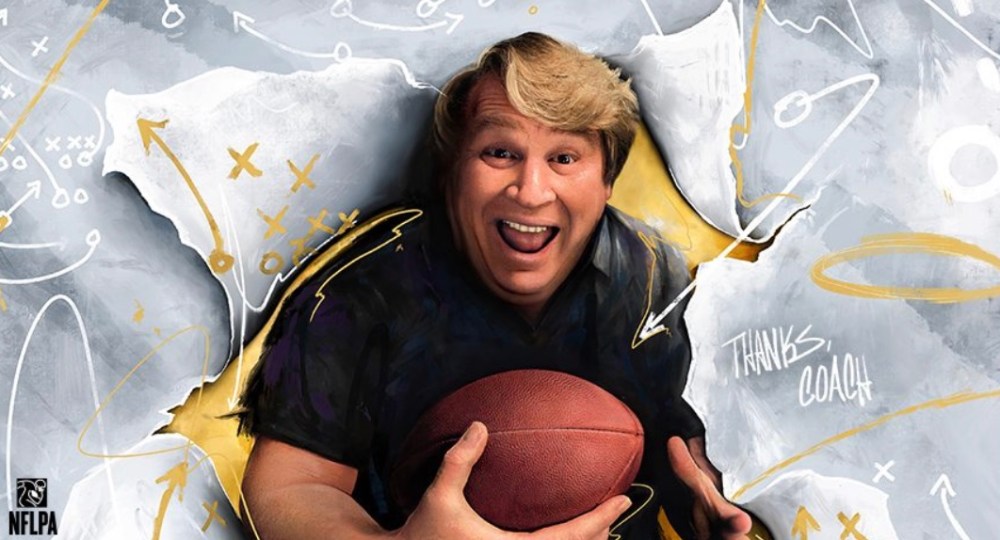
Given that EA Sports themselves directly stated that spot-drop zone was the priority for Madden 23, I was honestly not surprised but nevertheless disappointed by the results of this exercise. Man-match didn’t receive much attention last development cycle, so the schemes on offer in Madden 23 are extremely limited, cannot begin to totally replicate the myriad man-match calls NFL defenses employ on Sundays, and the limited rule sets in some cases are not robust enough to survive even one hot route.
The play designs in Madden NFL have consistently lagged behind contemporary NFL schemes in recent years, making plays we see frequently on Sundays either difficult or impossible to execute. It is challenging to execute the under-center wide-zone play-action offenses that are en vogue in the NFL — notably run by the Rams, Packers, Titans, and Vikings — for multiple reasons. Kyle Shanahan’s under-center motion-heavy run schemes are not fully represented in the latest game, and the Ravens’ diverse run play designs while present are only available in scant few formations. Other popular blitz schemes such as the Read blitz concept employed by the New England Patriots and the Miami Dolphins are not represented in Madden whatsoever. The defensive line stunts heavily emphasized by blitz-averse defenses that still affect the quarterback, such as the Cowboys’ four-man pass rush, have never appeared in Madden either.
Among all the schematic omissions, I contend that the absence of robust man-match coverage schemes is the most glaring deficiency in the football gameplay of Madden NFL. The game’s rather public advancement of legacy spot-drop zones paired with spot drop’s decades-known inability to slow down modern spread and Air Raid offenses has enabled and encouraged the bombs-away, pass-happy meta we have all witnessed in most online head-to-head game modes, not only in the Madden Championship Series and Ultimate Team but also in many online leagues run through online CFM (despite many leagues’ countless house rules to keep their most competitive players in check in the name of authenticity). If you’ve ever lamented getting mercilessly pulverized by one-play touchdowns from Gun Bunch, Gun Tight Doubles, or five-out Empty sets as your CPU-controlled teammates watch receivers run by them in confusion, you stand to benefit from learning and having access to a robust man-match coverage toolbox in a future Madden game.
Personally, I have enjoyed playing Madden NFL the most when I am able to learn about the sport of football through the game. That hasn’t really happened for a few years as the offensive and defensive schemes on offer in Madden haven’t kept up with the sport it emulates. If Madden NFL is going to replicate modern NFL football going forward, EA Sports must first walk back one of the first design decisions they revealed last year and commit decisively to bringing their game’s pass coverage schemes forward into the present.


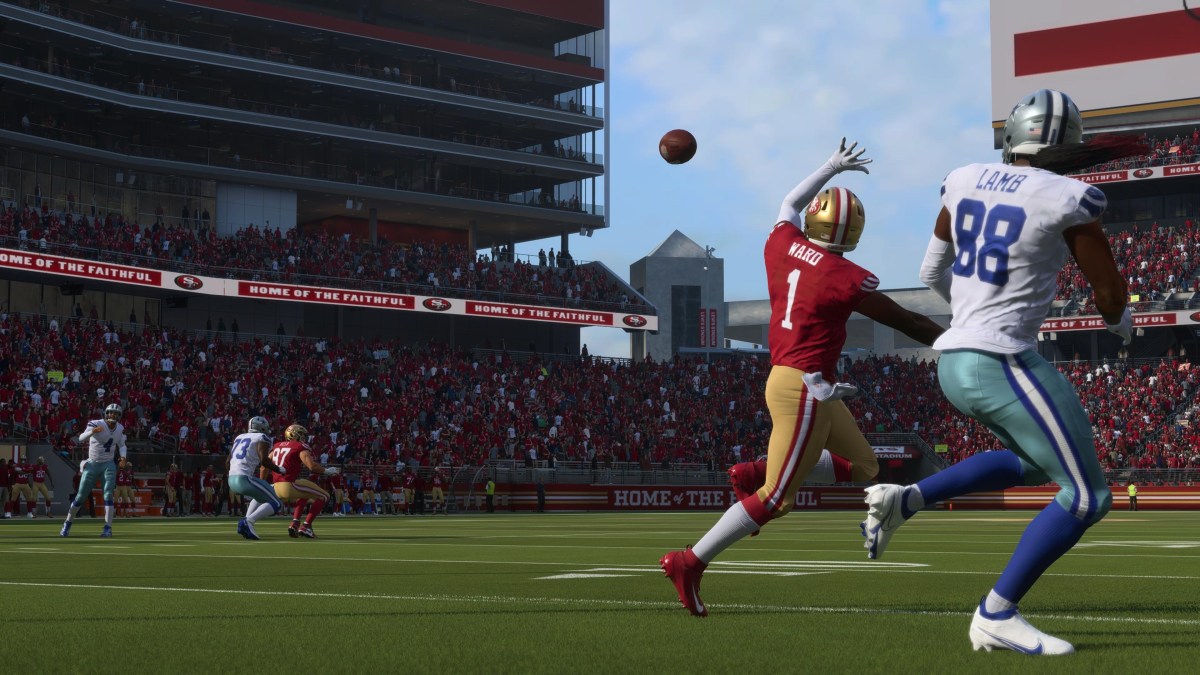
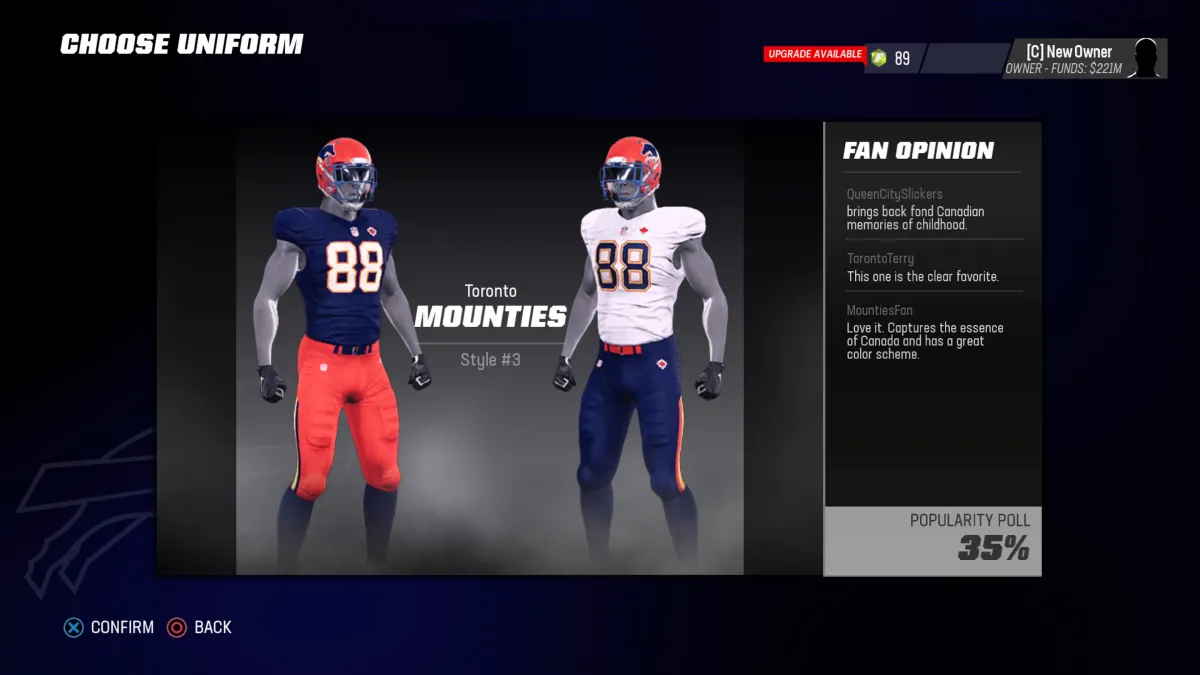
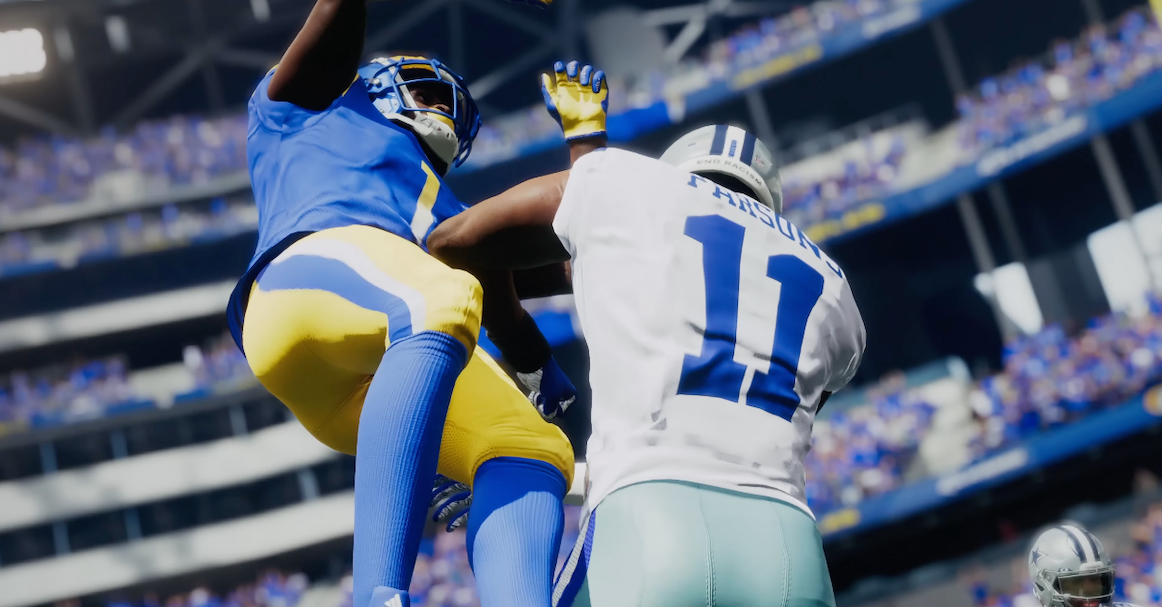
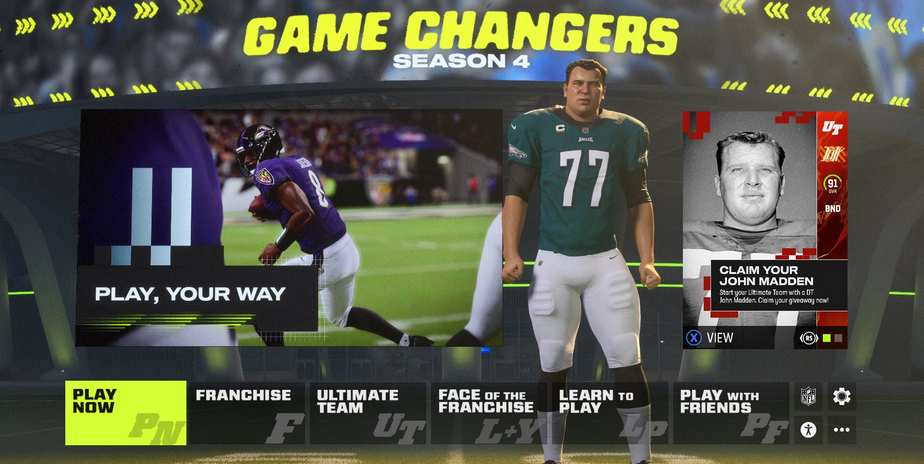
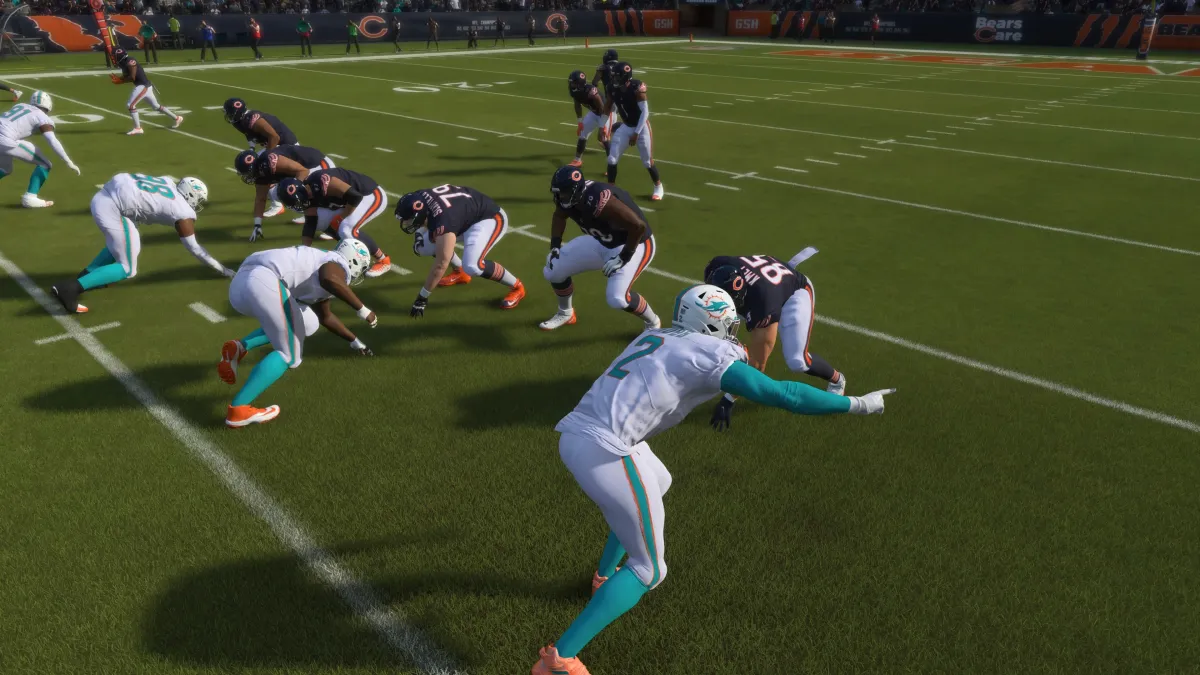
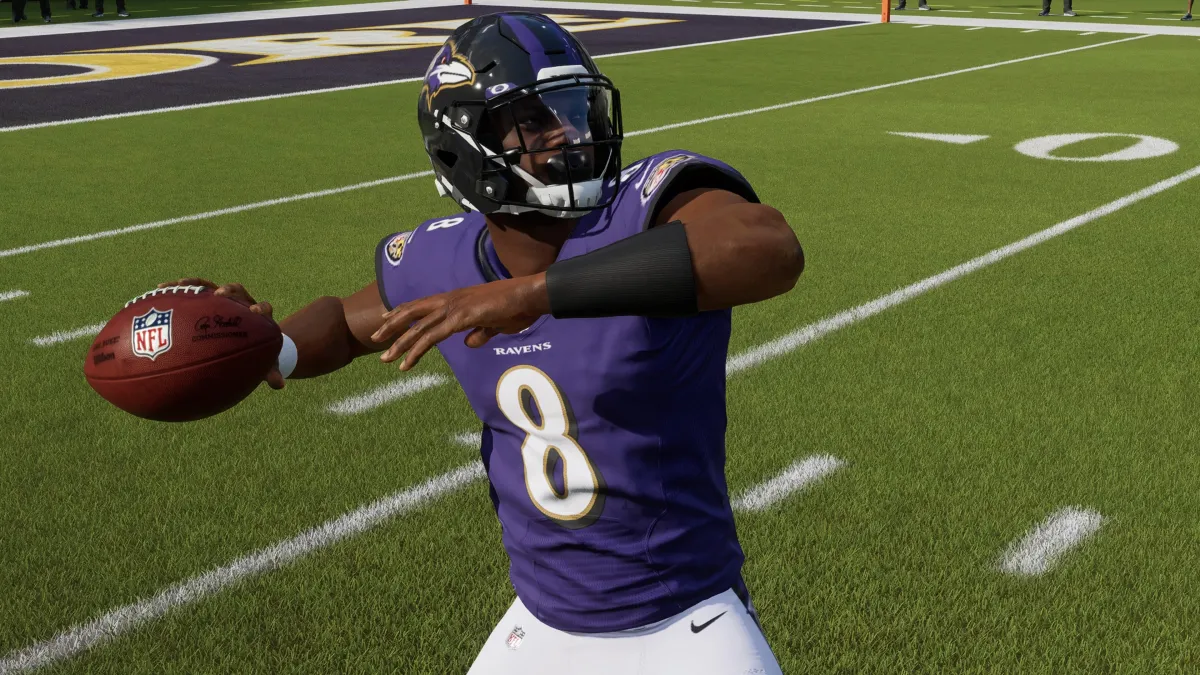
Published: Jan 26, 2023 04:16 pm